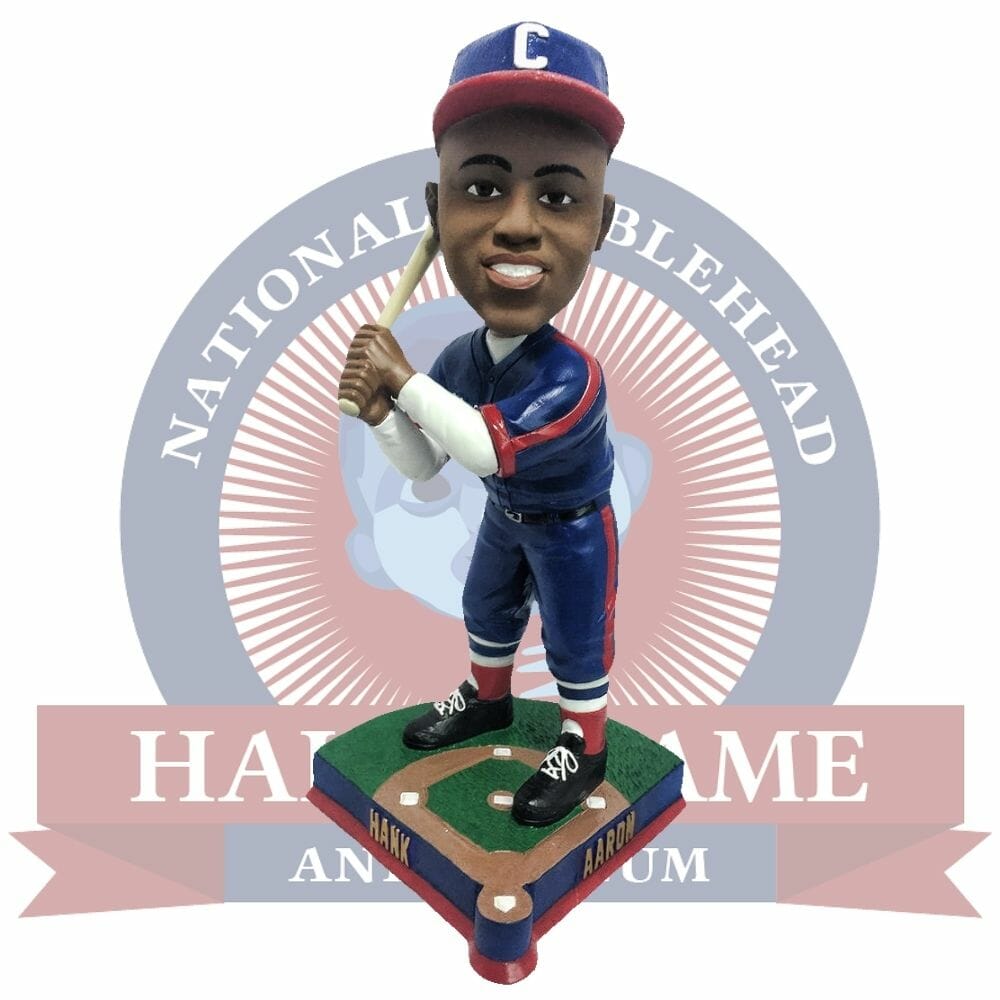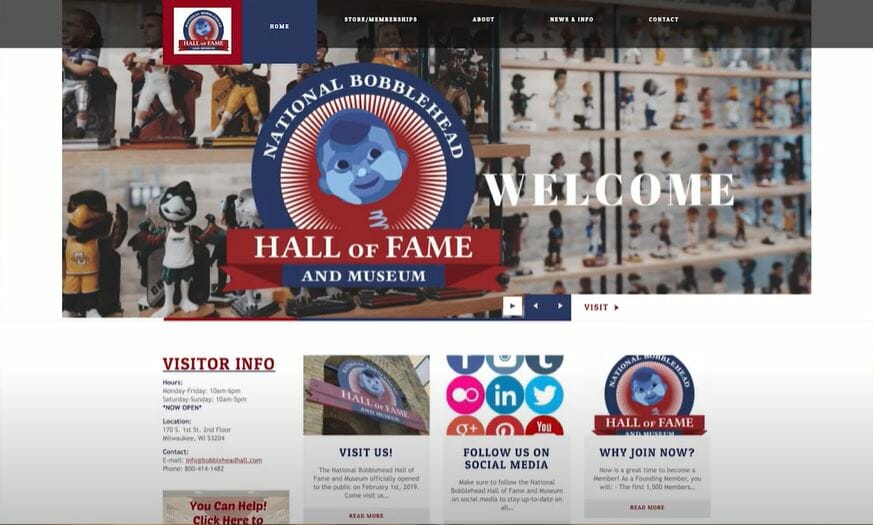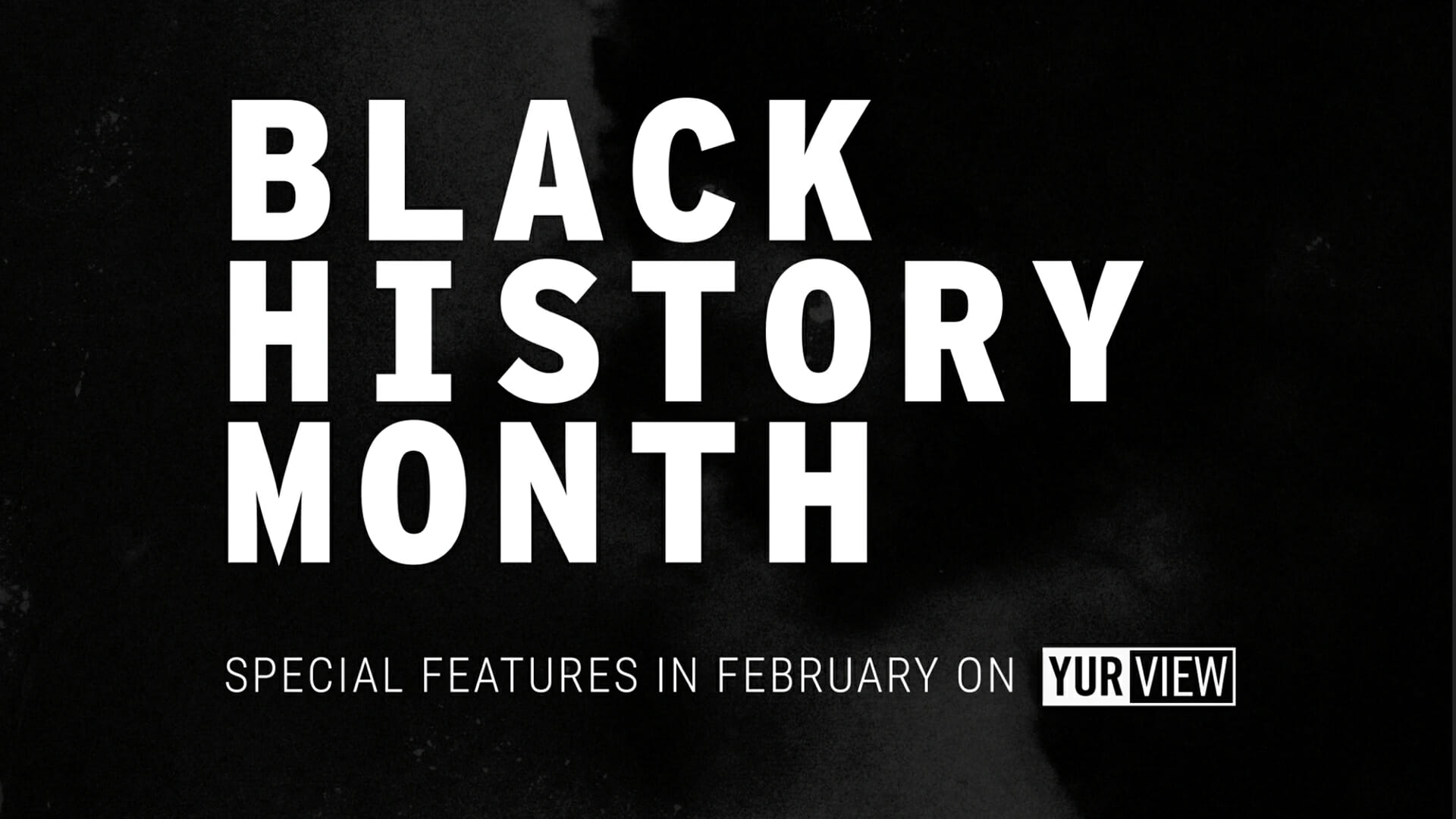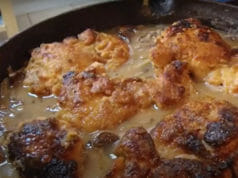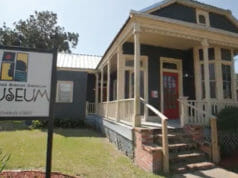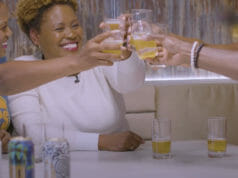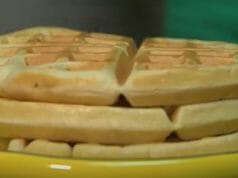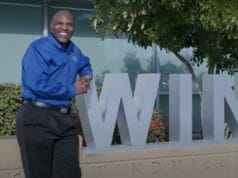The National Bobblehead Hall of Fame and Museum, together with the Negro Leagues Baseball Museum and Dreams Fulfilled, produced a series of officially licensed Negro Leagues bobbleheads. The National Bobblehead Hall of Fame and Museum in Milwaukee, Wisconsin unveiled two limited-edition bobbleheads featuring Mobile, Alabama native and Baseball Hall of Famer Hank Aaron, wearing the uniform of the storied Indianapolis Clowns.
The two bobbleheads commemorate the three months that Aaron spent with the Clowns during the 1952 season which was his first in professional baseball. They are individually numbered to 4,136, reflecting Aaron’s career hit total (41 Negro Leagues, 324 Minor Leagues and 3,771 Major Leagues).
Founder of the National Bobblehead Hall of Fame and Museum, Phil Sklar, was interviewed on YurView’s Main St. Living in honor of Black History Month and told us all about these spec creations. Watch the video above, or read the transcription below (lightly edited for clarity).
- National Bobblehead Hall of Fame and Museum
- Hank Aaron Bobbleheads
- Hank Aaron’s Baseball Career
- Negro Leagues
- Museum Website
National Bobblehead Hall of Fame and Museum
Cheryl Nelson, Host of Main St. Living (00:07) – Welcome back to Main Street Living. Quincy, Danielle, do you ever come across something that you never knew existed? But once you knew about it, you’re so happy that it’s there?
Danielle Alvari, Host of Main St. Living (00:18) – Yes, and I bet that’s how our viewers are going to feel a they see the National Bobblehead Hall of Fame and Museum which is founded by our next guest. Please welcome Phil Sklar. Phil, thanks so much for making time for us on Main Street living.
Phil Sklar, Founder of the National Bobblehead Hall of Fame and Museum (00:31) – Yeah, thanks for having me.
DA (00:32) – So, Phil, we have to know, why did you create this Hall of Fame and Museum for bobbleheads?
PS (00:38) – Yes. So it started out with a single bobblehead. We produced a bobblehead of our friend and manager for a local sports team, Michael. And that was in 2013.
(00:49) – But going back to 2003. We got the first bobblehead in my and the other co-founder Brad’s collection. And we loved it and started to collect and go to games that had bobblehead giveaways. And before we knew it, we had 3,000 bobbleheads in about 10 years and realized there was no museum dedicated to bobbleheads. And so we took matters into our own hands.
Hank Aaron Bobbleheads
QC (01:10) – Wow, 3,000 bobbleheads. And two of your recent editions, Phil, are bobbleheads featuring baseball legend Hank Aaron in his clowns uniform, which was part of the Negro Leagues. What’s the special part about these bobbleheads?
PS (01:25) – Yeah, so in about 2019, we were contacted by the Negro Leagues Baseball Museum in Kansas City, Missouri, to produce a series of bobbleheads, commemorating the 100 anniversary of the founding of the Negro Leagues, which was in 2020. And so we were really excited about that.
(01:42) – I had been to the museum twice before, and it’s really, you know, players and a league that people need to know more about. And so we were thrilled, because bobbleheads are a great way to teach people and engage people about different subjects, whether it’s the Negro Leagues, or, you know, certain people in history that are significant. So we were thrilled about that opportunity.
(02:03) – And now, to date, we’ve produced over 100 different bobbleheads for the Negro Leagues Museum. And portions of proceeds go back to the museum. So they have a great cause as well. But Hank Aaron is one that we’re really proud of – two different bobbleheads of him in his Indianapolis Clowns uniform, which is where he really got his start, kick started his amazing career.
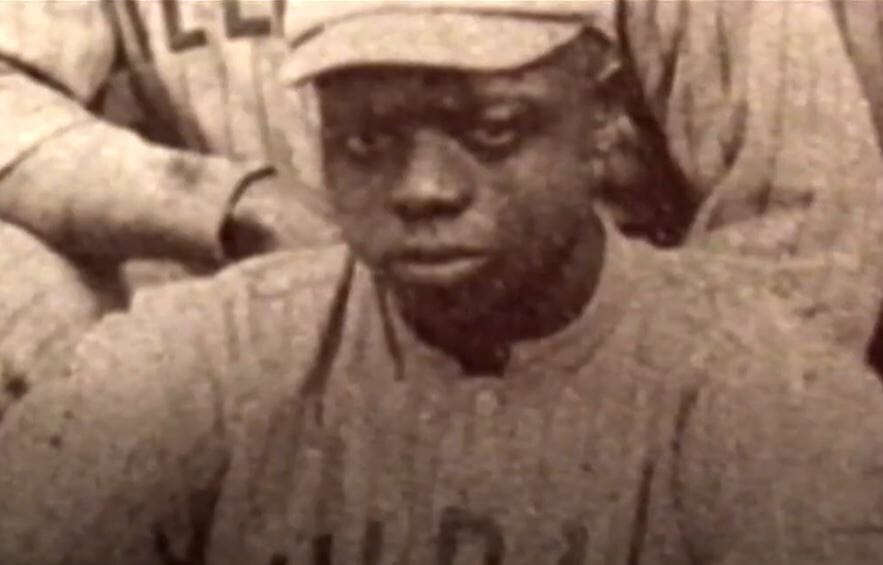
Hank Aaron’s Baseball Career
DA (02:25) – Well, I can totally agree with you. I think more people need to know about the Negro Leagues. What can you tell us more about that story?
PS (02:30) – Yeah. So Hank Aaron, you know, grew up in the south and was playing baseball. He actually played with like a stick and grew up in a family that didn’t have a lot of money. But somebody saw his athletic ability. And he played in a few different organized, sort of semi-professional leagues and got a chance to play with Indianapolis Clowns, which was one of the Premier Negro Leagues teams. And well, with the Clowns, Major League Baseball scouts saw him and was signed by the Braves organization.
(03:03) – From there, he went to Eau Claire, which is the minor league team for the Braves at the time. And, you know, he just took off and now is one of the best players ever to play the game. Obviously, we lost him last year. He passed away. But as a legend throughout the baseball world, and really an icon and history maker, just with you know what he did. He wasn’t the first one. Obviously, Jackie Robinson really broke the color barrier. But he came shortly after that.
(03:33) – With his homerun chase, and reaching that 755 homerun plateau, broke a lot of records and really made a lot of improvements for black athletes in not just baseball, but across sports.
Negro Leagues
QC (03:49) – Yeah, I know that clip that they’ve played. I’ve seen it like on ESPN, when he actually breaks it and the fans run on the field. And he’s running around the bases after he got that homerun record. But that was when he was in his MLB days. So why is it so significant that these bobbleheads feature him in his Clowns uniform?
PS (04:08) – Yeah, so a lot of people don’t realize that he even played in the Negro Leagues. So I think that’s really significant. At the time that he played with the Clowns, there was still a lot of players who couldn’t play in the Major Leagues just because of the color of their skin. Like Jackie Robinson, who, you know, was the first to play in Major League Baseball, as a black athlete. And it’s hard for a lot of people to believe now, that somebody because of the color of their skin couldn’t play in the top league.
(04:38) – And so that’s really why it’s so important to learn about the Negro Leagues and to learn about the history of that time. And, you know, just to make sure that doesn’t repeat and also to just sort of explore the history and the climate at that time.
(04:55) – And one of the interesting things about the bobbleheads…we get people every once in a while that say he’s batting the wrong way. He’s actually batting cross-handed in the bobblehead. And that was how he batted it until he went to the Eau Claire team when they taught him the correct batting stance.
Museum Website
QC (05:11) – Ah, information I didn’t even know.
DA (05:14) – Yeah. Well, before we let you go, how can viewers find out more information about all of this, about the museum? And also, can they get their own Hank Aaron bobblehead?
PS (05:23) – Yes. So on our website, there, you can go ahead and shop online to get the Hank Aaron bobblehead – bobbleheadhall.com. You can visit the museum virtually. We have about 7,000 unique bobbleheads on display here in Milwaukee. You can see some of them behind me. But we have an always growing collection with the Hank Aaron bobbleheads just being added and new ones coming all the time. So people can follow along on the website and social media as well.
(05:47) – And if you’re in the Milwaukee area, stop by. And if not, go on a virtual tour today or whenever you have a chance from the comfort of your home or office.
QC (05:55) – Well look at that. Thank you so much, Phil, for stopping by. And thanks for sharing that information with us today.
PS (06:00) – Yeah, thanks for having me.
QC (06:02) – Alright. Also remember, you can find more information about the history of the Negro Leagues at NLBM.com.
For more Black History Month features, visit yurview.com/BlackHistoryMonth.


